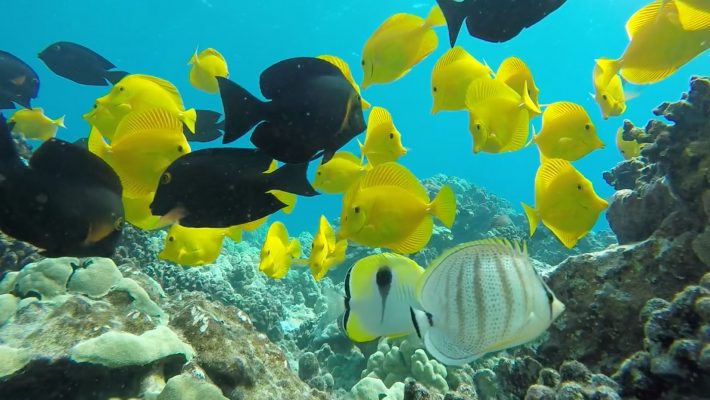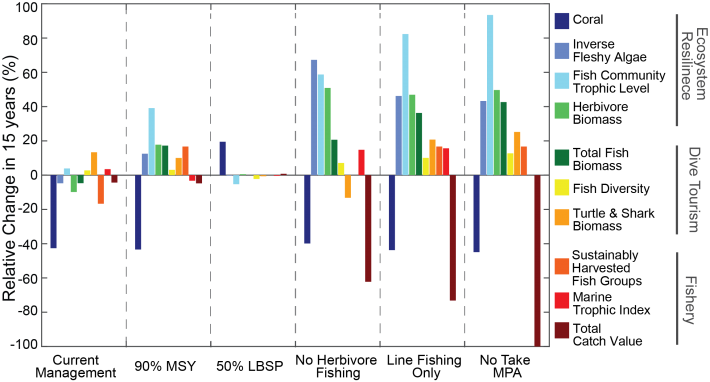A big picture for the big island
NOAA Fisheries news article

The ocean off the west coast of Hawai‘i Island is home to vibrant coral reefs, fish, green sea turtles, spinner dolphins, whales, and manta rays. West Hawai‘i has the largest expanse of intact and actively growing coral reef in all of the main Hawaiian Islands. The wide array of ocean life makes west Hawai‘i incredibly important for marine biodiversity and human society.
The coastal ocean and coral reefs provide seafood, resources for tourism and recreation, protection from wave and storm impacts, and the preservation of cultural practices. But it is also particularly vulnerable to the pressures of an increasing population, coastal development, fishing, pollution, and climate change.
A recent study published in the Journal of Applied Ecology provides a range of options to protect and restore this valuable marine ecosystem for the future. Scientists from NOAA’s Pacific Islands Fisheries Science Center, Hawai‘i Division of Aquatic Resources, and The Nature Conservancy evaluated different management scenarios for one specific area: Puakō, in west Hawai‘i. The scientists evaluated how different management strategies would benefit the coastal marine ecosystem and coral reef health.
The evaluation was based on key ecosystem services and indicators. Six different management scenarios were then assessed based on:
- No change in current management
- Reduced fishing
- Reduced land-based pollution
- No fishing of herbivores
- Line-fishing only
- Marine protected areas
The current management scenario was the poorest performer—with nearly all key ecosystem indicators decreasing or with no meaningful change. Maintaining the status quo is projected to result in less highly prized fish, such as jacks, parrotfishes, snappers, unicorn fishes and chubs, whereas undesirable fish species increase (moray eels, hawkfishes, tobies, and porcupine fishes). Additionaly, coral reefs will likely become dominated by algae.
All of the other management options show improvements in ecosystem structure and resilience. However, reducing land-based sources of pollution was the only scenario where coral cover increased. Dive tourism would derive the greatest benefit from only line-fishing and no-take areas. The reduced fishing scenario (90% Maximum Sustainable Yield [MSY]) shows positive gains in all three ecosystem services, including the largest to fisheries, however gains were minimal in comparison to other management options.
The scenario with only line-fishing represents the most balanced trade-off for all indicators with positive gains for both ecosystem structure and resilience and dive tourism and only moderate losses for fisheries.

Ultimately, no management solution simultaneously promotes recovery of ecosystem stability while also maximizing the delivery of ecosystem services. SeIelecting the ‘best’ management strategy for the region depends on the desired balance between enhancing ecological benefits (i.e., improved ecosystem structure and resilience) and improving socio-economic benefits to fishermen and dive tourists. However, by elucidating tradeoffs and evaluating a range of potential management options, this study serves as an important decision-support tool and provides a “big picture” context as we move toward ecosystem-based management in the region.
Read the full article (freely available for a limited time):
Weijerman M, Gove, J, Williams I, et al. Evaluating management strategies to optimize ecosystem services provided by coral reefs. J Appl Ecol 2018. DOI: 10.1111/1365-2664.13105
Media contact:
Mariska Weijerman, NOAA Pacific Islands Fisheries Science Center. Email: mariska.weijerman@noaa.gov
Like what we stand for?
Support our mission and help develop the next generation of ecologists by donating to the British Ecological Society.